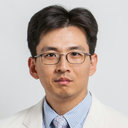Prevalence of Mutations in Discoidin Domain-Containing Receptor Tyrosine Kinase 2 (DDR2) in Squamous Cell Lung Cancers in Korean Patients.
Keywords
Abstract
OBJECTIVE
The discoidin domain-containing receptor tyrosine kinase 2 (DDR2) is known to contain mutations in a small subset of patients with squamous cell carcinomas (SCC) of the lung. Studying the DDR2 mutations in patients with SCC of the lung would advance our understanding and guide the development of therapeutic strategies against lung cancer.
METHODS
We selected 100 samples through a preliminary genetic screen, including specimens from biopsies and surgical resection, and confirmed SCC by histologic examination. DDR2 mutations on exons 6, 15, 16, and 18 were analyzed by Sanger sequencing of formalin-fixed, paraffin-embedded tissue samples. The functional effects of novel DDR2 mutants were confirmed by in vitro assays.
RESULTS
We identified novel somatic mutations of DDR2 in two of the 100 SCC samples studied. One mutation was c.1745T>A (p.V582E) and the other was c.1784T>C (p.L595P), and both were on exon 15. Both patients were smokers and EGFR/KRAS/ALK-triple negative. The expression of the mutant DDR2 induced activation of DDR2 by the collagen ligand and caused enhanced cell growth and tumor progression. Moreover, dasatinib, a DDR2 inhibitor, showed potential efficacy against DDR2 L595P mutant-bearing cells.
CONCLUSIONS
Our results suggest that a mutation in DDR2 occurs naturally with a frequency of about 2% in Korean lung SCC patients. In addition, we showed that each of the novel DDR2 mutations were located in a kinase domain and induced an increase in cell proliferation rate.


